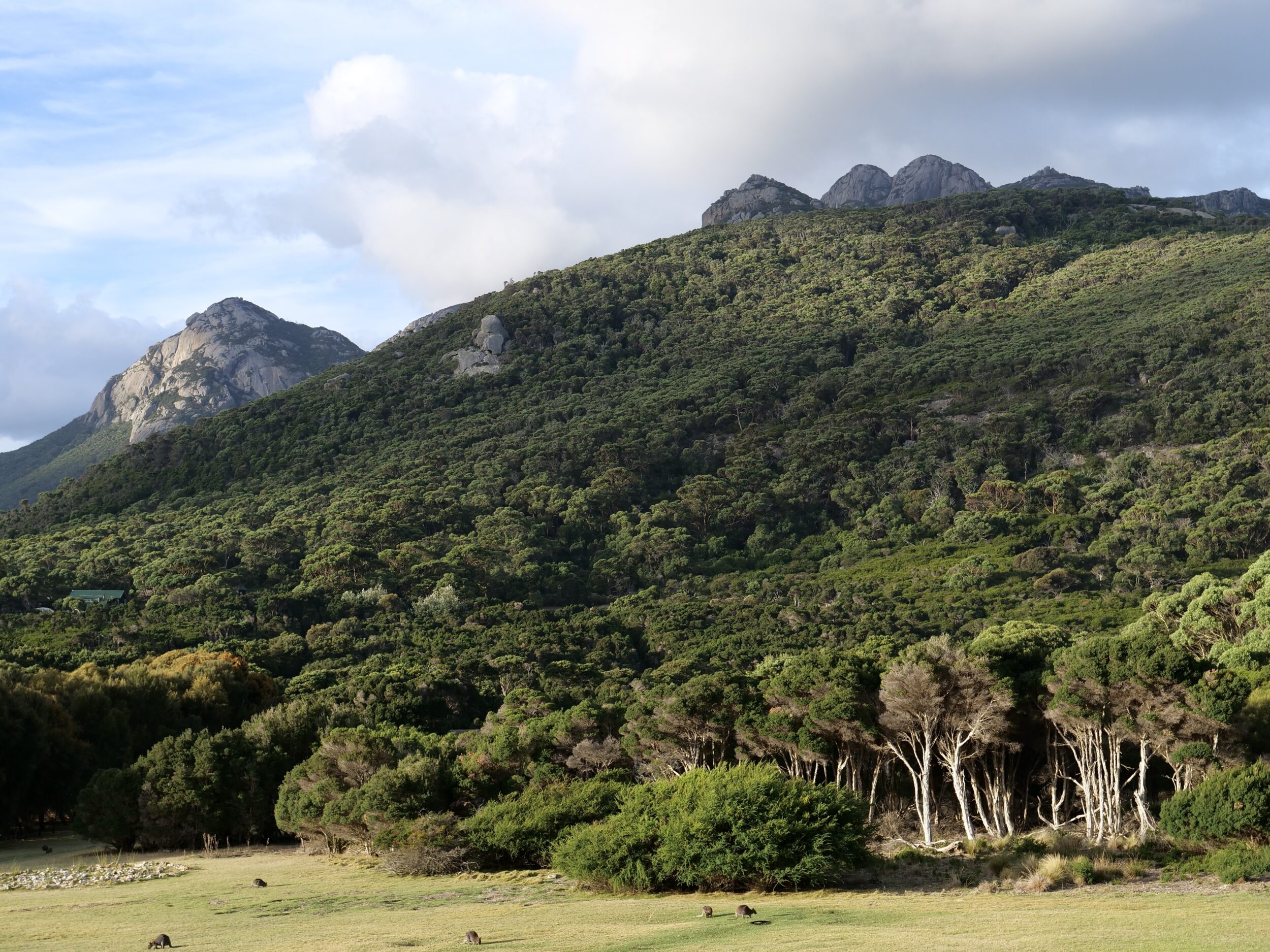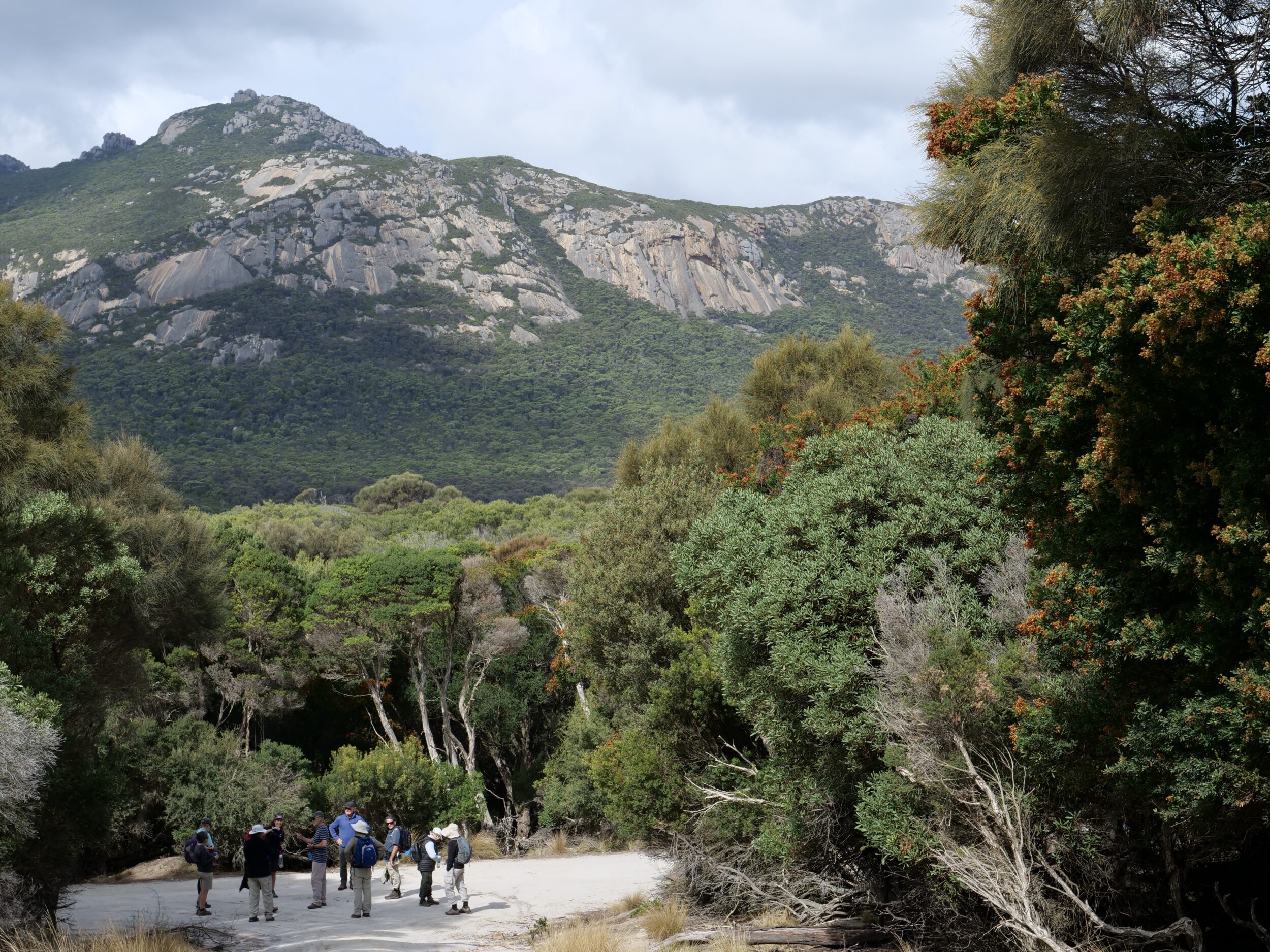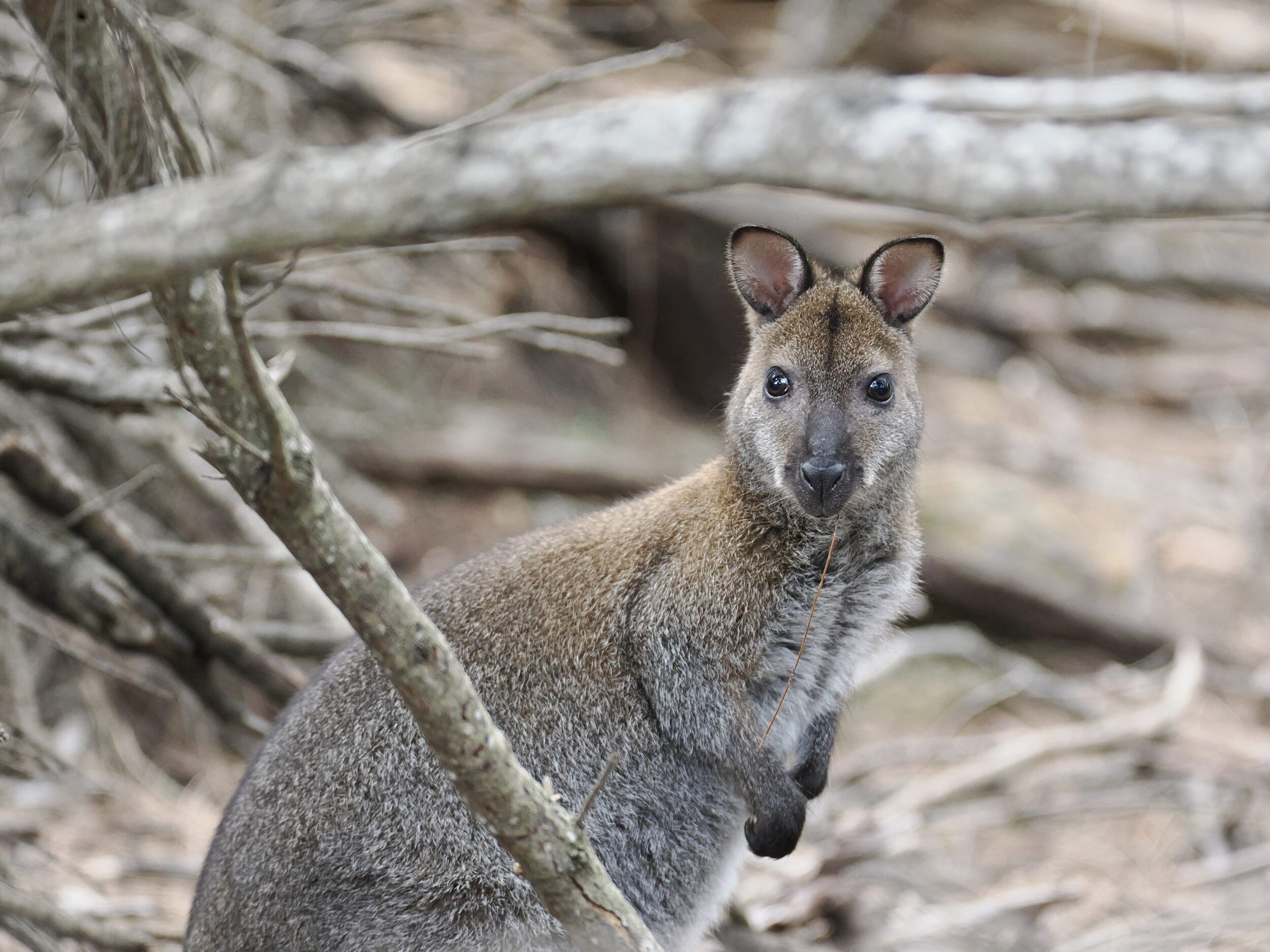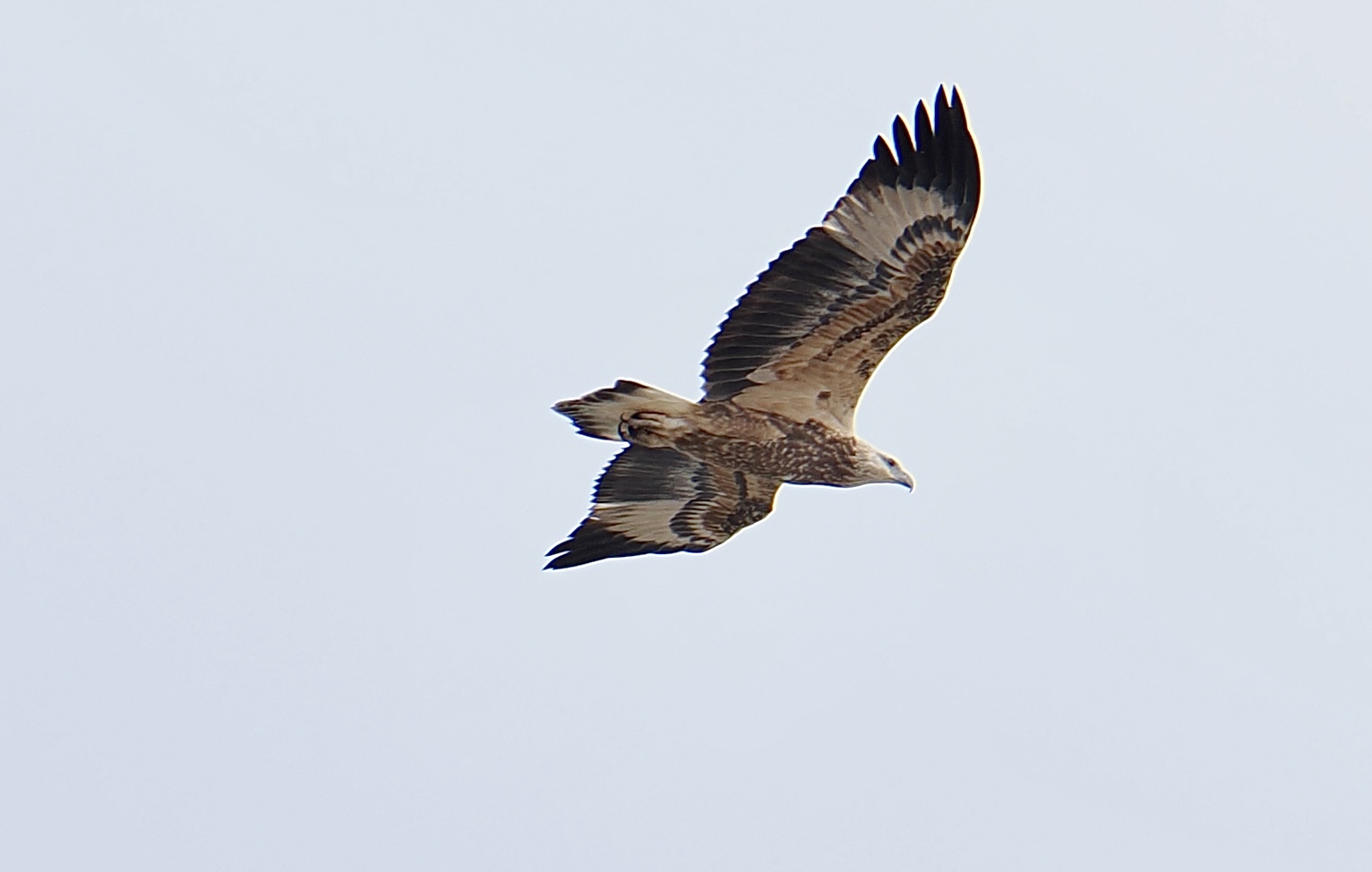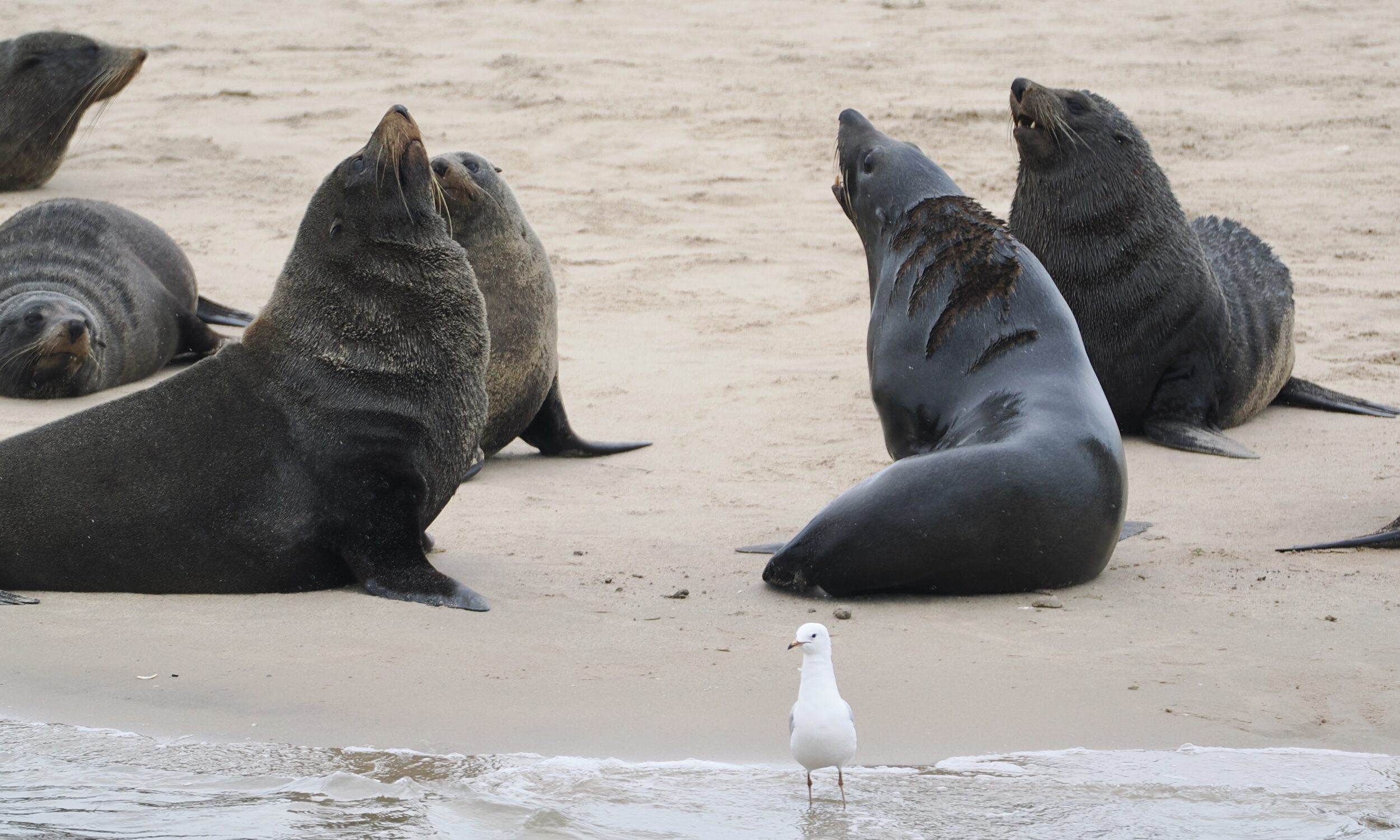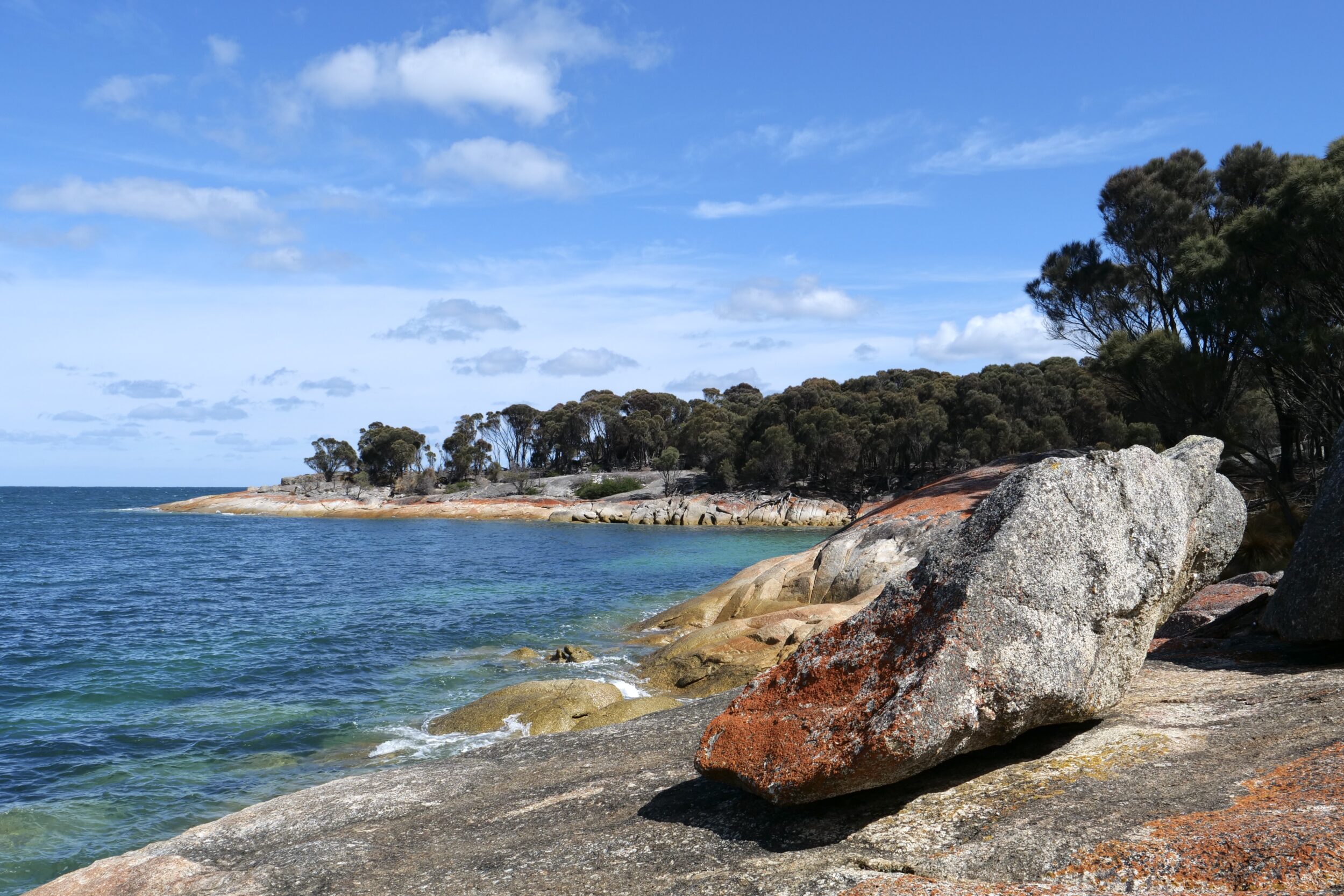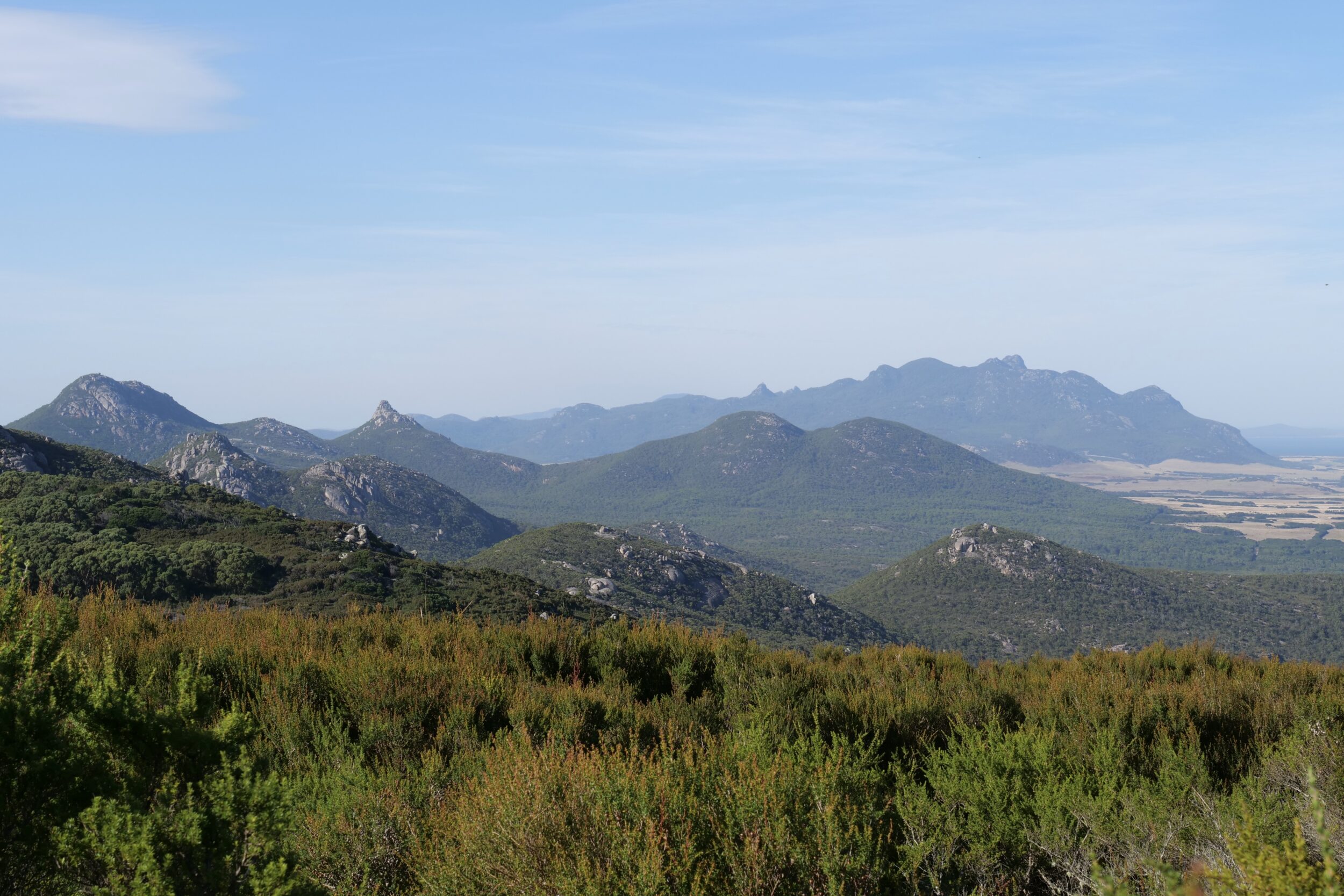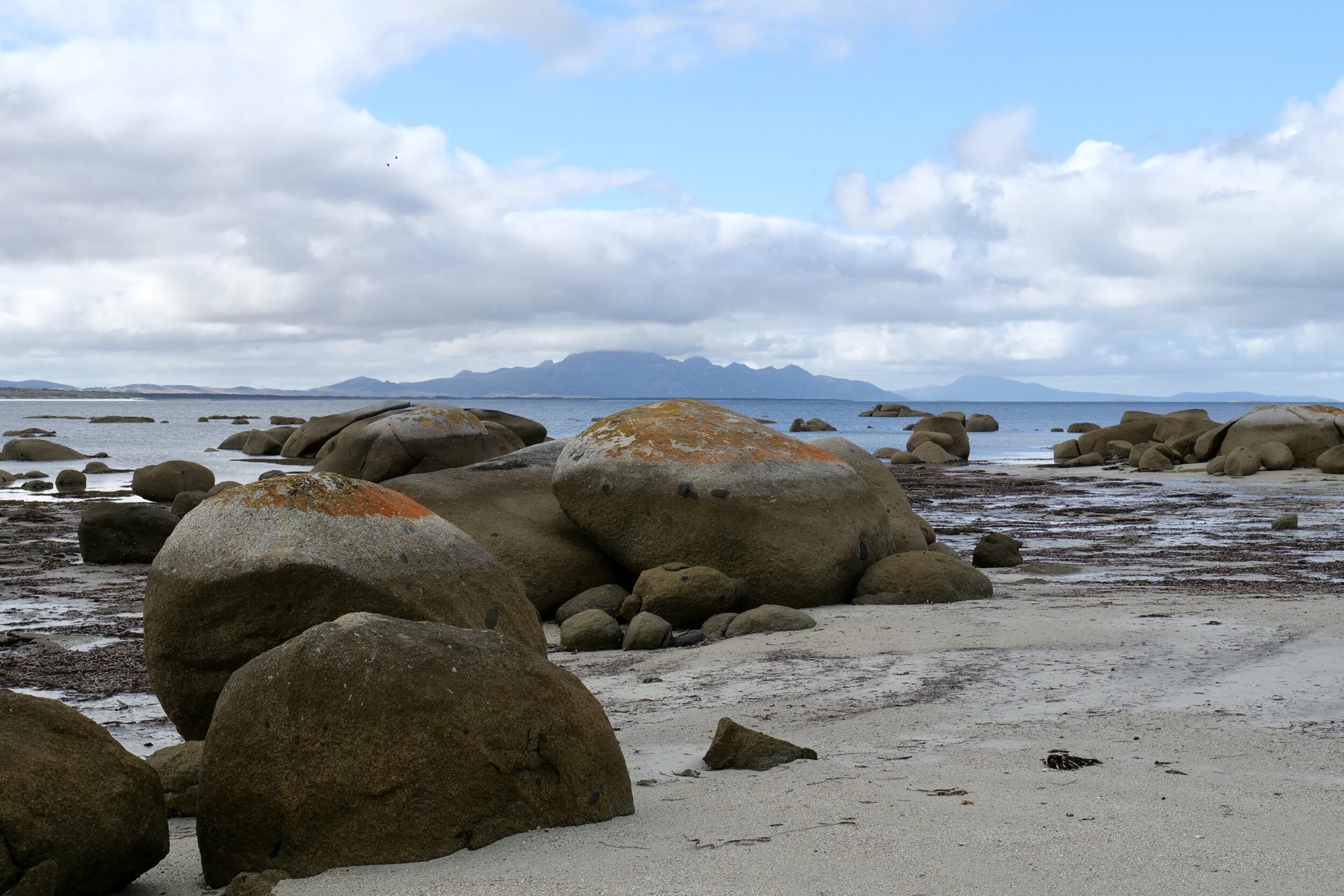I took this post’s photo an hour or so after we had landed on Flinders Island.
Luggage collected, our little group proceeded to the picnic shelter which is adjacent to Trousers Point Beach.
I am keenly aware that “good” light can disappear or shift, quickly.
So, whilst everyone else started to eat, I ducked down to the shoreline, where I took the featured image, at 1.49 pm on 17 March 2025,
The island’s most celebrated beach was just behind my left shoulder, with Flinders’ most spectacular peaks rising above it.
The sun, however, was in exactly the “wrong” place – there was no point in pointing a camera lens at Trousers Point Beach and the mountains.
As you can see, the “lesser view” – looking the other way, working with the available light – was still splendid.
